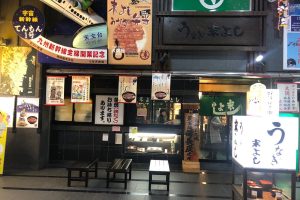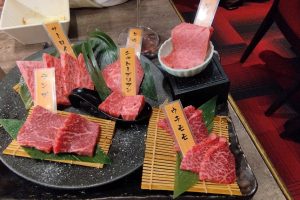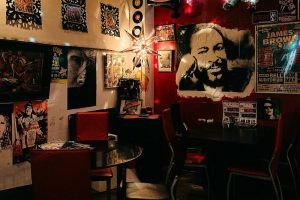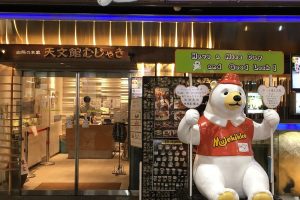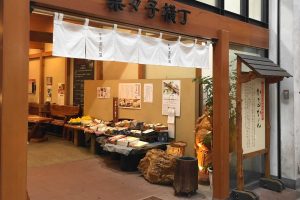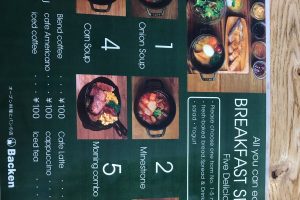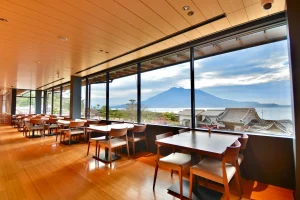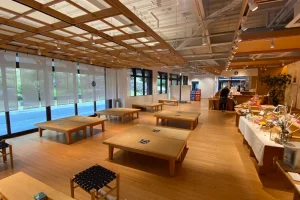A Taste of Kagoshima: Discovering the Flavors of Southern Japan
Nestled in the southernmost part of Kyushu, Kagoshima Prefecture is a land of dramatic volcanoes, subtropical beauty, and deep-rooted culinary traditions. With its rich natural resources—fertile volcanic soil, pristine seas, and warm climate—Kagoshima has cultivated a distinct food culture unlike anywhere else in Japan. Here, every dish tells a story of the region’s history, landscape, and heartfelt hospitality.
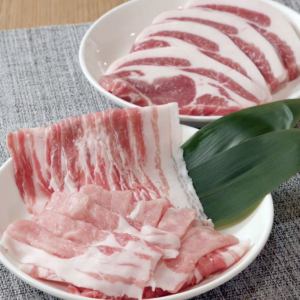
Kurobuta (Kagoshima Berkshire Pork)
Kagoshima’s celebrated Kurobuta, also called Kagoshima Berkshire, comes from black-hooved pigs weighing about 20–30% less than typical breeds. Fed a nutrient-rich diet of sweet potatoes, grains, acorns, and volcanic soil–treated bedding, these pigs are raised for up to 270 days in stress-free, free-range environments. This results in meat scientifically proven to contain high levels of amino acids, lending a natural umami sweetness and juicy tenderness, with fat that is light and non-greasy.
Popular dishes include black tonkatsu coated in bamboo charcoal and black sesame (“kurokatsu”), shabu‑shabu, and miso-marinated pork using Kagoshima’s own rice-miso, garlic, soy, and citrus kabosu. Many restaurants, like Juan Arataten, serve it with locally grown “Isa rice” slow-cooked over kamado stoves to enhance its rich flavors.
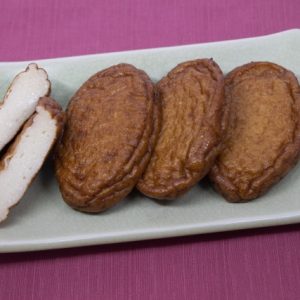
Satsuma-age (Deep-Fried Fishcake)
A traditional staple believed to have originated during the Edo era under Shimazu rule, satsuma-age was inspired by Ryukyuan chiki-agi and served as a way to preserve abundant coastal fish like sardine, mackerel, and flying fish.
Made from surimi mixed with tofu, egg, potato starch, sugar, sake, salt, and sometimes vegetables like burdock, lotus root, or perilla then deep-fried to golden perfection. It’s enjoyed plain, in stews, or grilled and dipped in soy-ginger or mustard.
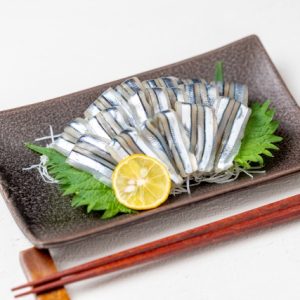
Kibinago (Silver-stripe Round Herring)
These slender silvery fish, lifted fresh from Kagoshima’s nearby seas, are often served sashimi-style, elegantly fanned across a plate, accompanied by vinegar-miso or ponzu dipping sauce. They can also be lightly grilled—delicate in flavor yet imbued with the region’s oceanic essence. This tiny fish is a true Kagoshima-specific treasure.
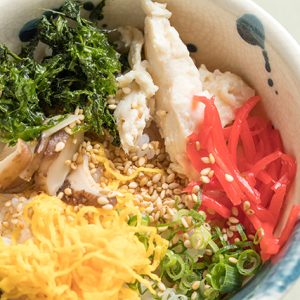
Keihan (Amami Chicken Rice Bowl)
A centuries-old dish from Amami Ōshima, Keihan dates back at least to the Edo period and was traditionally served by the Shimazu lords to visitors.
The dish layers shredded steamed chicken, strips of egg, pickled papaya (papaya-mi), dried shiitake, citrus peel, nori, and sometimes sake-steamed shiitake or orange zest on white rice. A savory hot chicken broth is poured over it, blending textures in a way reminiscent of ochazuke; in modern times, this broth-pouring style has become standard.
It’s also a cultural touchstone, appearing in school lunches and home cooking underlining its comfort-food status.
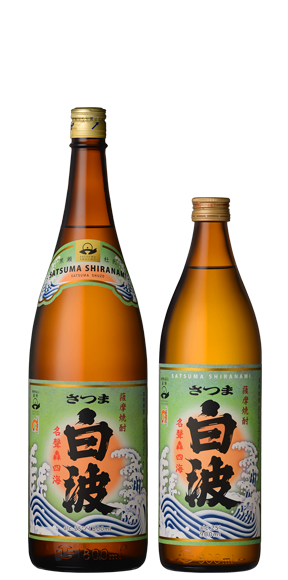
Satsuma (Imo) Shochu
Kagoshima is the leading region for sweet potato shōchū, accounting for roughly 70% of production in prefecture and nearly 40% of Japan’s total imo shōchū.
Distilled from locally harvested sweet potato varieties, like the classic Kogane Sengan, floral Joy White, and purple-rich Ayamurasaki, along with locally sourced rice kōji and pristine groundwater, imo shōchū has a smooth, aromatic, floral flavor. It’s enjoyed neat, on ice, hot, or diluted with water using a kuro-joka, and even served in ornate Satsuma kiriko cut-glass cups for celebrations.
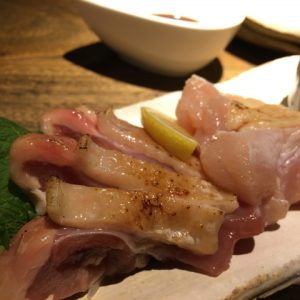
Torisashi (Chicken Sashimi)
This daring delicacy features ultra-fresh chicken either raw or just seared, and is consumed with soy, grated ginger, garlic, or sometimes garlic chips. Kagoshima’s reputation for safe poultry sourcing (and strict vetting by establishments serving it) makes this rare treat possible. Food-safety-conscious diners should only enjoy it at trusted, licensed restaurants.
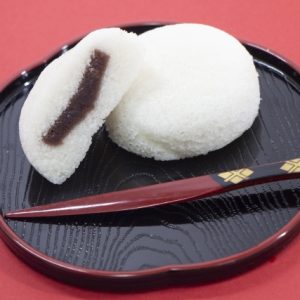
Karukan (Steamed Yam Cake)
Karukan (漢字: 軽羹) is a light, fluffy steamed sweet dating back to the Satsuma domain in the late 17th–early 18th century, originating from wild yams and island sugar, once reserved for the elite .
Made from karukan rice flour, sugar, and grated Japanese yam, it’s steamed into a soft, spongy cake—a “light yokan.” Modern versions often come as karukan manju, with red bean paste filling. Still a wedding/funeral staple, it’s also a beloved regional souvenir
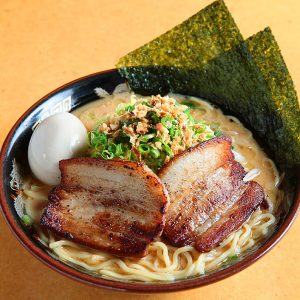
Kagoshima Ramen
Kagoshima’s own ramen style is a local favorite with a distinctive identity. Unlike the ultra-rich tonkotsu ramen of Fukuoka, Kagoshima Ramen features a lighter pork bone broth, often blended with chicken, vegetables, and dried fish, giving it a balanced, mellow umami.
The noodles are thicker and wavy, offering a heartier bite, while toppings often include Kurobuta pork chashu, fried garlic, and green onions. Each shop adds its own twist, some incorporate black garlic oil, others pickled vegetables or charred onions. Best enjoyed in Kagoshima City’s Tenmonkan Ramen Alley, this bowl embodies the warmth and depth of the region’s food culture.

